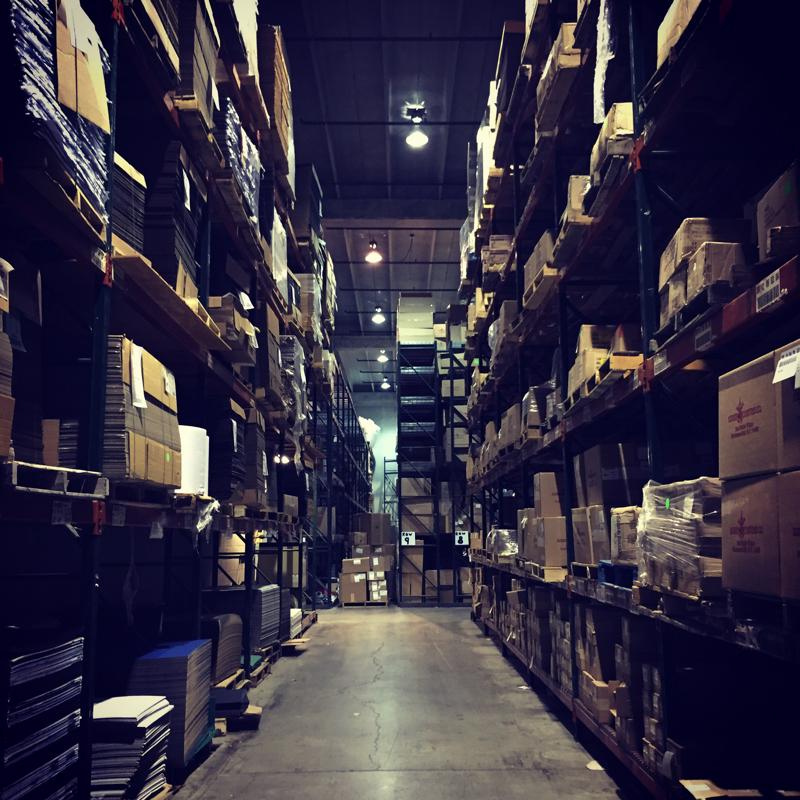Facility managers strive to keep their warehouses at consistent, comfortable temperatures all year long. Fluctuations in temperature and humidity outside can pose a challenge at times.
When the outdoor climate becomes frigid in the winter, it’s more difficult to keep the inside temperature up, especially in large, industrial spaces like warehouses. However, the changing seasons are no reason to let a facility become too cold for workers or products inside the facility. Rather, it’s an opportunity to evaluate a warehouse and identify areas to improve.
If you’re having trouble keeping your warehouse or facility warm this winter, consider these important areas:
Doors: Keeping the heat in
Every time you open a door, no matter for how long, you allow air to exchange between the two sides of the entrance. There are a number of ways to minimize airflow at your warehouse doors.
The first and easiest way to ensure as little air exchange as possible is through employee habits. Make sure everyone knows that it’s not OK to let a door remain open for longer than it takes to pass through it. Fixing signs to the door or nearby walls to remind everyone to keep the door closed can also help.
Next, it’s important to ensure the door is kept in good shape so that it effectively keeps the cold air out when it’s closed. If there are any gaps between the door and the frame, you can bet you’re losing warm air to the cold winter outside. Consider refurbishing the frame to keep a tight seal from outside elements.
For dock doors, air exchange can easily occur while a truck is being unloaded. Dock seals can help immensely in keeping cold air out of the warehouse during this task. Additionally, leveler seals can further insulate this entrance when in use.
Additionally, periodically check that the insulation is doing its job; if you notice cold spots are forming by the door, it may be time for a replacement.
Finally, selecting the right door can help immensely. High-speed doors, for example, close quickly to keep warm air from escaping. Revolving doors are constantly sealed while still permitting people to enter the facility, which is a convenient way to keep warm air indoors.
Shelving: Strategic floor layouts
 The shelves at your warehouse could be blocking heating vents.
The shelves at your warehouse could be blocking heating vents.Your warehouse heating system is only effective if the warmth produced is allowed to fill your facility; if vents or ducts are being blocked, the heat won’t be able to spread throughout the room. Locate each heating vent and determine whether anything is blocking it. Some obstructions may include:
- Shelving.
- Equipment.
- Tanks.
- Waste bins or containers.
If something is blocking the vents and can easily be moved, then you might have an easy fix. However, if many vents are blocked by shelves or large pieces of equipment, it may be worthwhile to re-evaluate your floorplan and come up with a new layout that allows for greater airflow.
The right racking system can work with other systems throughout your warehouse, including your heating. Custom engineered racking systems can ensure they’re helping, not hindering, your efforts to keep your warehouse warm.
Fans: Circulate the air
The fact that hot air rises is a basic law of physics that affects the responsibilities of anyone in charge of keeping a room with high ceilings heated. If your warehouse has plenty of vertical space, you may have enough heat coming into the room, but not enough of it at ground level where it counts.
To push the warmth back down to where your employees will feel it, use warehouse fans: High-volume, low-speed fans, which have blades that extend several feet, will do this quickly and efficiently. Fans also break up hot or cold pockets, mixing the air so all areas have a consistent temperature. Facility managers who install HVLS fans into their warehouses often find that the addition not only helps maintain their desired indoor climate, but also helps to reduce heating bills because it efficiently distributes warmth.
If you’ve noticed that your facilities are chilly this winter, it may be time to make some upgrades to your building. Reach out to Miner to learn about how upgrading your facility can ease your temperature control challenges.

